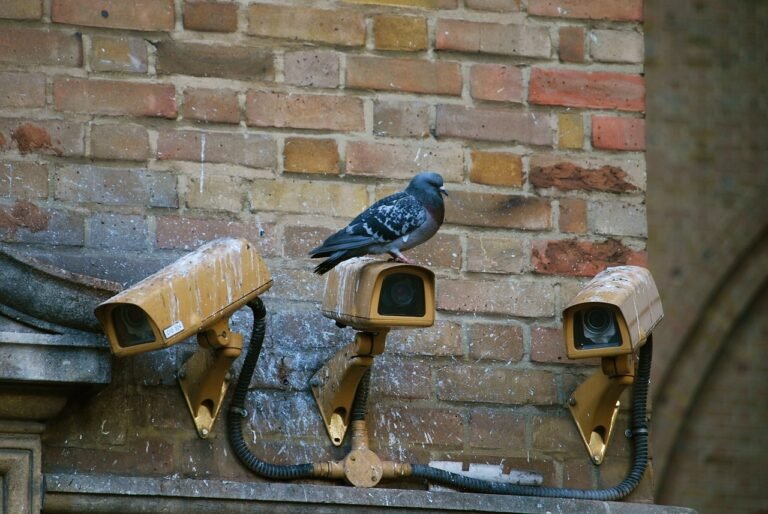The Good Girl by Mary Kubica (2024 Paperback) Review: A Psychological Thriller of Abduction, Memory, and Dark Family Secrets
If you love psychological thrillers that grip from the first page and reward you with an ending you’ll want to talk about immediately, Mary Kubica’s The Good Girl belongs on your nightstand. It’s twisty without gimmicks, emotional without melodrama, and relentless in how it probes the gap between who we think we are and who we become under pressure.
Maybe you’re here because you’re a Gone Girl fan, or because the premise—an on‑again, off‑again relationship, a mysterious stranger, a sudden disappearance—hits every domestic‑noir nerve. Either way, you want to know: Is the hype real? Is the 2024 paperback edition still worth it? And will it keep me turning pages past bedtime? Short answer: yes, yes, and absolutely.
What The Good Girl Is About (Spoiler‑Light)
The setup is deceptively simple: Mia Dennett, the daughter of a powerful Chicago judge, heads out to meet a boyfriend who never shows. She leaves the bar with a man named Colin—quiet, enigmatic, seemingly safe for a one‑night rebound. Then everything fractures. Instead of delivering Mia to the criminal outfit that hired him, Colin hides her in a remote Minnesota cabin. Back in Chicago, Mia’s mother, Eve, and Detective Gabe Hoffman start a frantic search. What unfolds is less a straight kidnapping story and more a study in psychology: memory gaps, moral ambiguity, and the messy loyalties that surface when your life is pulled inside out.
Kubica tells the story through multiple voices and a split timeline, toggling between “Before” and “After.” This structure builds an immersive puzzle where each chapter adds a shard of glass—and you don’t fully see the reflection until the end.
Curious to read it now? Check it on Amazon.
Why This Psychological Thriller Hooks You
The Good Girl succeeds where many thrillers stumble: it balances momentum with emotional depth. Here’s what stands out.
- Propulsive short chapters: The “one more chapter” effect is real here. Kubica keeps scenes lean, ending on questions that nudge you forward.
- Multiple POVs, one cohesive mystery: We see events through Mia’s fragile recollections, Eve’s fierce maternal drive, Gabe’s methodical persistence, and Colin’s conflicted conscience. It’s a Rashomon‑style approach that heightens tension without confusion.
- Slow‑burn dread over cheap shock: Instead of relying on gore or jump scares, Kubica cultivates unease through intimacy—quiet conversations, small gestures, the weight of silence.
If you’re new to the subgenre, psychological thrillers focus more on internal conflict and perception than action set pieces; think of it as suspense redirected inward, where the mind becomes the battleground. For context on how the thriller form evolved, see this overview from Britannica.
The Writing: Taut, Clean, Unshowy
Kubica’s prose is clear and purposeful. She doesn’t linger on flowery description; she chooses detail that carries emotional heft. The atmosphere—a snow‑capped cabin, a sterile interview room, a tense family dinner—arrives in spare strokes that feel cinematic without turning purple. It’s the kind of writing that lets you live inside the moment rather than admire how the sentence is built.
The Structure: “Before” and “After” as Moral X‑Rays
The split timeline isn’t just a stylistic trick—it’s the engine. By investigating the aftermath alongside the setup, Kubica changes what you think you know and invites you to question timelines, motives, and memory itself. Memory fragmentation—what we recall, what we suppress, and how trauma reshapes narrative—becomes a driving theme. If you’re curious about how trauma affects memory retention and recall, the American Psychological Association has a helpful primer.
Characters You’ll Argue About
This is where The Good Girl really sings. Each character is pulled into the ethical undertow differently, and their choices feel grounded in backstory rather than plot necessity.
- Mia Dennett: Not your standard damsel in distress. Mia’s choices—both naive and defiant—make her a complicated focal point. Her arc explores identity, autonomy, and the fragility of being “the good daughter.”
- Colin Thatcher: The book’s most conflicted figure. Kubica gives him layers that resist easy labels; he’s both captor and something else—something you’ll need to read to define.
- Eve Dennett: A mother navigating guilt, appearances, and a marriage built on ambition. Her chapters crackle with the tension of a woman reckoning with what she missed.
- Detective Gabe Hoffman: Grounded, dogged, human. He’s less a super‑sleuth and more a steady presence whose empathy lets him see past surfaces.
The interplay among them creates a web of emotional entanglements that’s as addictive as the mystery itself.
If this premise hooks you, you can Shop on Amazon and start reading within minutes.
Themes That Linger After the Last Page
The Good Girl is less about the act of kidnapping and more about what it uncovers. Kubica asks: What does “good” even mean when every choice carries a shadow? What happens to love when it’s sharpened by fear? And how do secrets—especially in families—become their own characters?
- Identity and performance: The Dennetts’ polished exterior conceals hairline cracks. The book interrogates the roles we play (good daughter, good mother, good man) and what we risk to keep them intact.
- Memory and truth: When memory becomes a maze, truth isn’t just hard to find—it’s hard to recognize. This uncertainty gives the novel its emotional payload.
- Power and class: The influence of Mia’s father—his legal stature, his need for control—creates a pressure cooker where justice, image, and private morality collide.
Here’s why that matters: thrillers that hold up beyond the twist are typically wrestling with something bigger than the mystery. Kubica gives you a page‑turner—and a mirror.
For Fans of Gone Girl and Domestic Noir
If your shelves include Gillian Flynn’s Gone Girl or Paula Hawkins’ The Girl on the Train, you’re in the right neighborhood. Kubica leans less caustic than Flynn and less bombshell‑twist than Hawkins, but she shares the obsession with flawed protagonists and unreliable narration. For context on Flynn’s cultural touchpoint, see the official page for Gone Girl. And if the Lisa Gardner blurb caught your eye, you can explore her body of work here: Lisa Gardner.
The Good Girl isn’t trying to out‑shock the genre. It’s trying to out‑feel it—and it often does.
Reading Experience: Pacing, Tone, and Content Notes
Let’s talk about what it’s like to actually read this book:
- Pacing: Fast without feeling rushed. Chapters tend to end on revelations or turns that invite another session.
- Tone: Claustrophobic, melancholy, occasionally tender. The cabin scenes carry a hush that’s as unsettling as it is intimate.
- Violence and triggers: Non‑graphic but emotionally charged. Abduction, manipulation, and trauma are central themes. If you’re sensitive to depictions of captivity or memory loss, approach with care.
- Language and content: Generally moderate. Kubica focuses more on psychological tension than explicit content.
If you gravitate toward thrillers that are more nerve‑tightening than splatter‑filled, this is your lane.
2024 Buying Guide: Paperback vs. Kindle vs. Audiobook
Choosing a format depends on your reading style and where you plan to read:
- Paperback (March 5, 2024 edition): A great value with a fresh cover and durable trade‑paper quality. Easy to annotate with tabs for book clubs.
- Kindle eBook: Ideal for travel and night reading. The tight chapters work well on small screens.
- Audiobook: Multiple POVs come to life with the right narrator. If you like hearing shifts in voice and tone, the audio adds texture.
Specs and tips: – Length: The novel lands in the “stay up late but finish in a weekend” zone. – Reread value: High, thanks to the dual timeline and reveal mechanics. – Book club friendly: Absolutely—more on that below.
Ready to pick your format? See price on Amazon before you decide.
How It Compares to Mary Kubica’s Other Books
If The Good Girl is your entry point into Kubica’s world, you’re in for a strong backlist. She’s known for emotionally charged mysteries that explore the fault lines in families and relationships.
- Local Woman Missing: Higher stakes with community‑wide reverberations and one of her most gripping cold‑case arcs.
- The Other Mrs.: Darker, moodier, with a coastal setting and a classic Kubica pivot in the final act.
- Just the Nicest Couple: Domestic tensions dialed to eleven, secrets layered, pacing crisp.
The Good Girl, as a debut, sets the template: human frailty, moral ambiguity, and a reveal that reframes what you think you’ve read. To explore Kubica’s full bibliography and upcoming titles (including She’s Not Sorry), visit the author’s official site: Mary Kubica.
Want the 2024 paperback with the updated cover? View on Amazon.
Craft Choices That Elevate the Story
Two choices deserve special mention:
- Multiperspectival narration: By letting us inhabit Eve, Gabe, and Colin, Kubica pushes the reader to empathize with conflicting truths. It’s a quiet challenge to our tendency to assign heroes and villains.
- Withholding as care, not trickery: The book withholds details in a way that respects the reader. Hints are planted; payoffs feel earned.
Let me explain why that matters. In thrillers, “the twist” can sometimes overshadow characterization. Here, the twist illuminates it. When the final reveal lands, it feels less like a rabbit pulled from a hat and more like a door you’ve been walking toward without noticing.
Book Club Guide: Discussion Prompts (Spoiler‑Safe)
Want to spark a lively conversation without giving away the ending? Try these:
- The title “The Good Girl” suggests a specific identity. How do the characters accept or resist the roles assigned to them?
- Which POV did you find most reliable early on—and did that change?
- How does the setting (Chicago vs. rural Minnesota) influence the story’s moral texture?
- Where did you feel most conflicted about sympathies, and why?
- Without spoilers: did the reveal enhance your understanding of the characters’ earlier choices?
Pro tip: Flag passages that hint at shifting power dynamics; they’re catnip for group discussion.
Who Will Love The Good Girl (And Who Might Not)
You’ll love it if: – You enjoy domestic thrillers with emotional complexity. – You prefer tension over gore. – You like dual timelines and multiple narrators.
You might pass if: – You want a high‑octane, action‑heavy plot. – You dislike memory‑driven narratives or slower, character‑centric stretches.
Prefer to sample first and then commit? Buy on Amazon when you’re ready.
Frequently Asked Questions
Is The Good Girl really similar to Gone Girl?
They share DNA—unreliable perspectives and domestic tension—but the vibe differs. Gone Girl leans razor‑sharp and acidic; The Good Girl is quieter, more intimate, and more invested in emotional consequences. If you like one, the odds are good you’ll enjoy the other.
Is the 2024 paperback edition different from earlier versions?
Content‑wise, the story remains the same. The 2024 paperback refreshes the cover and often features updated marketing copy. It’s a handy, affordable format if you prefer physical books.
How intense is the violence?
Violence is present but not graphic. The tension skews psychological: captivity, fear, and emotional manipulation. Sensitive readers should be aware of memory loss as a plot element.
Is this a good pick for book clubs?
Yes. The multiple POVs, moral ambiguity, and thematic focus on identity and memory give you plenty to discuss without requiring everyone to love the same characters.
Can teens read it?
Mature teens who are already reading psychological thrillers could handle it, but the themes are adult. Parents or educators might skim first to assess fit.
Does Mary Kubica’s later work get darker?
Some titles do push into darker terrain (e.g., Local Woman Missing), while others favor sharper domestic suspense. Her signature is emotional intensity across shifting moral ground, not gratuitous darkness.
Final Verdict: Why The Good Girl Still Deserves Your Time
The Good Girl earns its bestseller status by doing what the best psychological thrillers do: it tells a gripping story that doubles as an investigation into memory, identity, and the fragile bargains families make. Kubica’s debut is confident, humane, and built to be discussed. If you’re hunting for a book that will keep you up late and leave you with questions worth asking, this 2024 paperback is an easy yes.
Takeaway: Put it on your list. Then, when you’ve turned the last page, come back and compare notes—or subscribe for more spoiler‑safe reviews, book‑club guides, and smart picks in psychological suspense.
Discover more at InnoVirtuoso.com
I would love some feedback on my writing so if you have any, please don’t hesitate to leave a comment around here or in any platforms that is convenient for you.
For more on tech and other topics, explore InnoVirtuoso.com anytime. Subscribe to my newsletter and join our growing community—we’ll create something magical together. I promise, it’ll never be boring!
Stay updated with the latest news—subscribe to our newsletter today!
Thank you all—wishing you an amazing day ahead!
Read more related Articles at InnoVirtuoso
- How to Completely Turn Off Google AI on Your Android Phone
- The Best AI Jokes of the Month: February Edition
- Introducing SpoofDPI: Bypassing Deep Packet Inspection
- Getting Started with shadps4: Your Guide to the PlayStation 4 Emulator
- Sophos Pricing in 2025: A Guide to Intercept X Endpoint Protection
- The Essential Requirements for Augmented Reality: A Comprehensive Guide
- Harvard: A Legacy of Achievements and a Path Towards the Future
- Unlocking the Secrets of Prompt Engineering: 5 Must-Read Books That Will Revolutionize You






